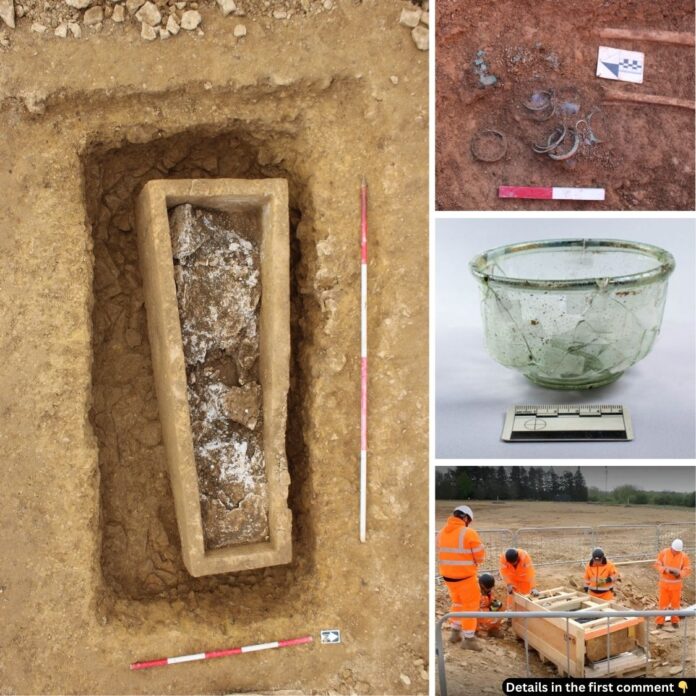In the midst of modern roadworks, an extraordinary relic of ancient history has emerged. Along the A47 in Cambridgeshire, archaeologists uncovered a massive Roman stone coffin, untouched for over 1,500 years. This discovery offers a rare glimpse into Roman Britain, revealing intricate burial practices and the lives of those who once walked these lands. With its secrets slowly coming to light, this find connects us to a distant past in ways both mysterious and profound.
Uncovering the Stone Coffin
The discovery occurred during construction work to expand a section of the A47, which follows the path of an ancient Roman road connecting key settlements in Roman Britain. Amid routine excavation, workers uncovered a small Roman cemetery containing 14 graves, with a massive stone coffin at its center. This hand-carved limestone sarcophagus, untouched for over a millennium, was carefully removed by a team of archaeologists from Headland Archaeology, assisted by civil engineers and conservationists.
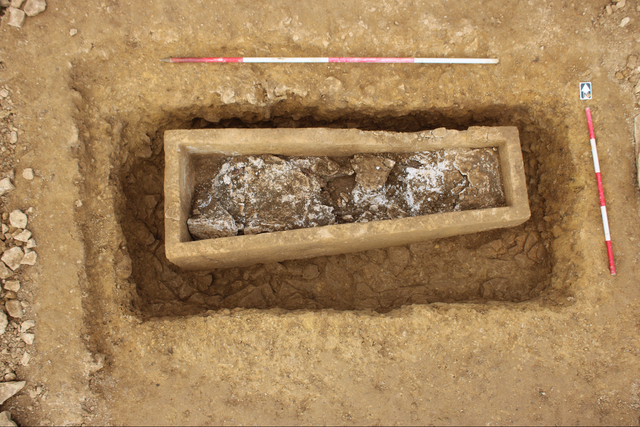
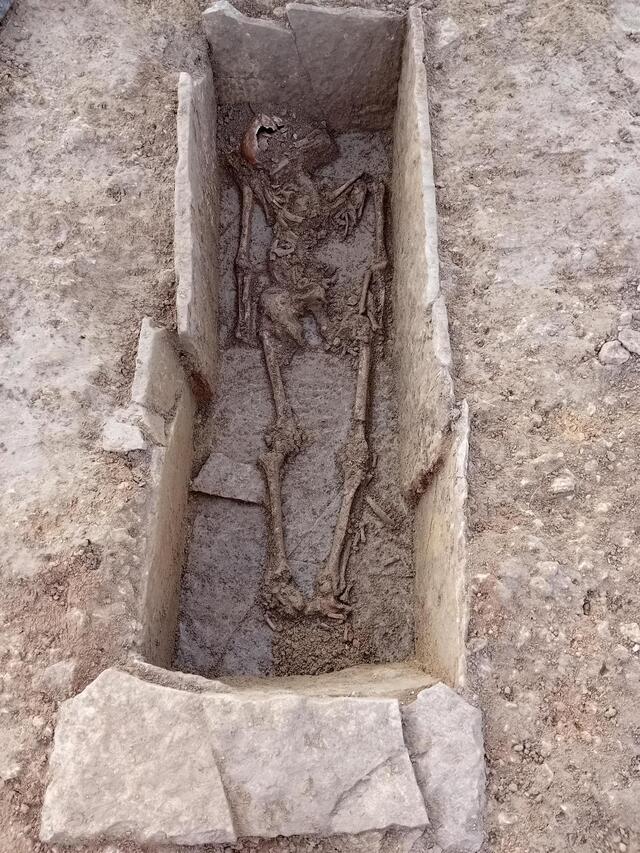
The coffin’s sheer size and weight, comparable to that of a fully grown male polar bear, required meticulous planning and engineering skill to excavate and transport it safely. Chris Griffin, National Highways’ program leader, emphasized the importance of preserving such finds during modern construction projects, stating, “It’s been extremely satisfying to play a part in uncovering such an unusual archaeological find.”
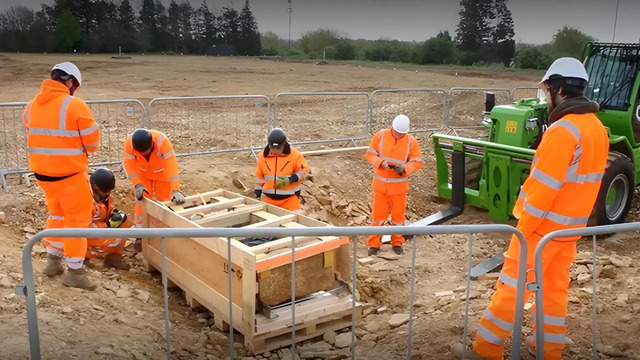
Video
A Roman stone coffin has been unearthed near Peterborough – watch the video to explore the significance of this remarkable discovery!
Gypsum Burial Practices in Roman Britain
Inside the coffin, archaeologists discovered evidence of a rare burial practice involving liquid gypsum. The gypsum was poured over the deceased’s clothed body before burial, encasing it in a hardened shell that preserved the contours of the body and shroud. This technique, though poorly understood, has been documented in other Roman burials, primarily in urban centers like York. However, finding such a burial in a rural setting like Cambridgeshire is highly unusual.
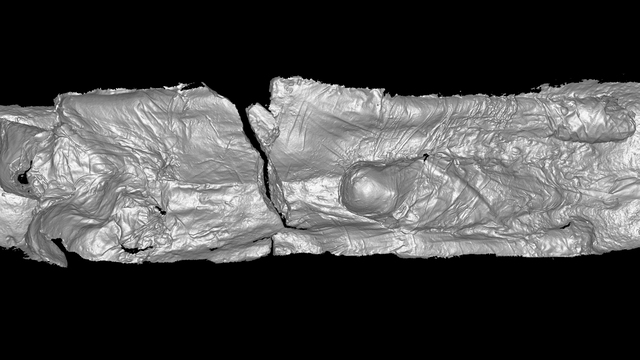
Researchers speculate that gypsum burials were reserved for individuals of high status due to the cost of materials and the labor-intensive process involved. The coffin itself, carved from limestone sourced 50 kilometers away, further underscores the significance of the individual interred within.
Cemetery Context and Additional Finds
The stone coffin was the focal point of a small Roman cemetery, which included a variety of burial types such as cist graves, cremations, and graves with wooden coffins. One grave contained the remains of a young woman adorned with silver earrings, nine copper bracelets, and three copper rings, suggesting her high social status. Another burial, that of a child, included an assortment of jewelry and a worked bone comb.
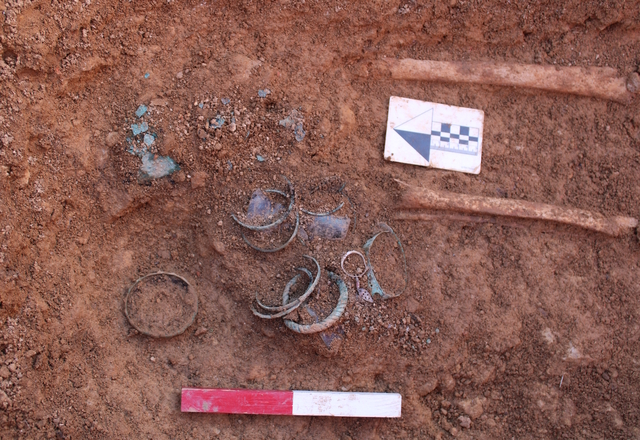
Nearby, archaeologists uncovered fragments of pottery, animal bones, and a glass vessel. These grave goods, while modest, provide valuable context for the burial practices and daily lives of Roman Britons in this region.
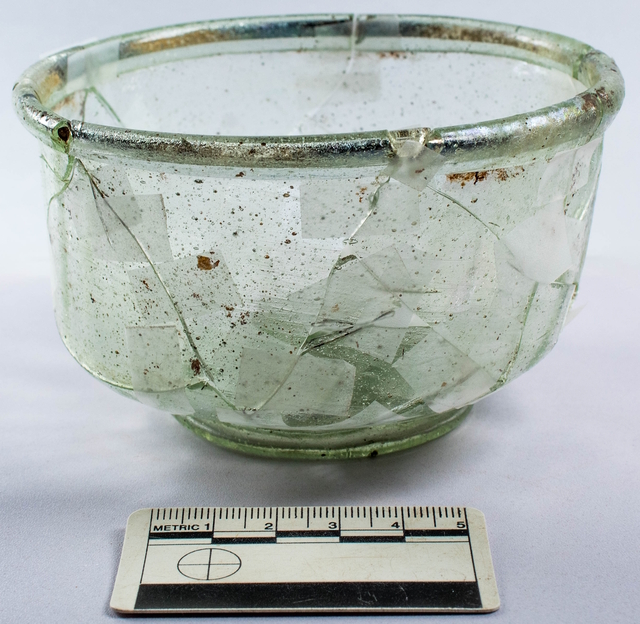
Historical and Cultural Implications
The discovery of this Roman cemetery and stone coffin offers a unique glimpse into the lives and beliefs of those who lived during the late Roman period. The gypsum burial, in particular, highlights the elaborate and varied funerary practices of the time. While the exact purpose of gypsum in burials remains unclear, it may have been intended to preserve the body for the afterlife or as a symbolic gesture.
The cemetery’s location along a Roman road underscores the importance of infrastructure in connecting communities and facilitating trade during the Roman occupation of Britain. These roads not only supported economic activity but also served as markers for burial sites, reflecting their central role in Roman society.
Innovative Techniques in Archaeology
The excavation of the stone coffin and its surrounding graves involved a combination of traditional methods and cutting-edge technology. Specialists from organizations such as York Archaeology and the Museum of London Archaeology used 3D imaging to analyze the gypsum fragments and detect imprints of the burial shroud. These techniques allow researchers to reconstruct burial practices and gain insights into textile production and clothing styles of the period.
Additionally, the coffin’s contents were carefully excavated in a controlled laboratory environment to minimize damage and ensure accurate documentation. This meticulous approach highlights the importance of interdisciplinary collaboration in modern archaeology.
Challenges and Mysteries
Despite the wealth of information uncovered, many questions remain unanswered. The identity of the individual buried in the stone coffin is unknown, as no inscriptions or personal identifiers were found. The lack of grave goods within the coffin itself adds to the mystery, as high-status burials often included valuable items.
The purpose of gypsum in Roman burials also remains a subject of debate. Was it a practical measure to preserve the body, or did it hold symbolic meaning? Further research and comparative studies may help unravel these mysteries and deepen our understanding of Roman funerary customs.
Broader Significance of the Find
This discovery is part of a broader effort to document and preserve archaeological sites uncovered during infrastructure projects. National Highways and Headland Archaeology have demonstrated the value of integrating archaeological work into modern development, ensuring that historical artifacts are recorded and protected for future generations.
The find also highlights the importance of public engagement in archaeology. Programs like Digging for Britain, which will feature the discovery, bring these remarkable stories to a wider audience, fostering appreciation for the rich history beneath our feet.
Conclusion
The unearthing of a Roman stone coffin during UK roadworks offers a rare and fascinating glimpse into the past. From the intricate gypsum burial to the surrounding cemetery, this find provides valuable insights into Roman Britain’s funerary practices and social structures. While many questions remain unanswered, the discovery underscores the importance of preserving and studying our shared heritage.
As modern development continues to uncover remnants of the past, these findings remind us of the enduring connections between ancient and contemporary societies. Through careful excavation and innovative research, we can continue to learn from history and ensure that its stories are preserved for generations to come.
